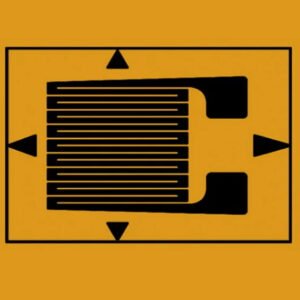Currently Empty: $0,00

TRITON-F ACCELEROGRAPH (REMOVABLE SD AND SIM CARDS)
TRITON-F accelerograph is an integrated data acquisition system plus sensor which was conceived for applications where a combined and space-saving solution are required. Very low seismic noise levels are achieved thanks to the sensor being shielded inside the enclosure and to the short wiring.
TRITON-F accelerograph is available with MEMS or true mechanical Force Balance Accelerometer (FBA) sensor. Two different dynamic ranges are available for the MEMS sensor 90dB and 110dB, while the force balance sensor is 160dB.
The TRITON-F accelerograph can be equipped with extra inputs for 3 or 6 24-bit channels. In this configuration, in addition to the internal sensor, the instrument can be externally connected to two other high dynamic sensors.
OVERVIEW
Description
EXCELLENT PERFORMANCE
The instrument is equipped with high-resolution delta-sigma 24bit ADCs, all the channels are synchronized and the sample rate is adjustable up to 1000 sps per channel. The internal memory (up to 1TByte) has two independent recording zones: the ring-buffer zone which is dedicated to continuous sampling, and the triggering zone which is used for event sampling.
The data format is MiniSEED.
The built-in GNSS receiver synchronizes the system clock with the absolute time so that a network of several units can be created where all the channels are synchronized. Using the trigger criteria that is available in the firmware, it is possible to distinguish environmental vibrations from seismic events.
EASY TO USE
You can control TRITON-F accelerograph locally via network connection (LAN or WiFi), and remotely using the integrated 4G modem (optional).
The instrument can be used as a “stand-alone” unit to record seismic events in the field or it can be used in a MASTER-SLAVE based monitoring network where multiple instruments are connected to each other; the MASTER device manages the interconnection with the other SLAVE units, collecting data from them and managing the connection with the remote server. Furthermore, MASTER and SLAVE units can perform periodic analysis of ambient noise and post-seismic vibrations in order to evaluate the structural damage caused by an earthquake, in real-time.
Thanks to SeedLink protocol TRITON-F accelerograph is compatible with most popular seismic analysis software (Seiscomp, Antelope, Earthworm).
INTEGRATED UPS
TRITON-F’s power supply ranges from 9 to 28 Volt DC, it can be connected to the electric power network using the included power supply adapter. TRITON-F is equipped with an internal battery (LiPo) which can guarantee an autonomy of about 33 hours in the case of a blackout. This feature is greatly appreciated by our customers because it is like having an integrate UPS, and it saves space and money; both the 4G modem and the external sensors’ power supply is backed up by the internal battery.
ROBUST
The anodized aluminum (INOX AISI316 option) enclosure is CNC milled, shockproof, vibration-resistant, weather-resistant and designed with a built-in mounting brackets for easy installation.
Application
TRITON-F is designed to suit various applications and provide a solution to the users needs in the field.

STAND ALONE GEOPHYSICAL OR STRUCTURAL SURVEYS
In this operational mode, TRITON-F acquires data as a simple recorder, storing it on its memory or making it available on a miniSeed stream.
The user will then decide if they want to interact with TRITON-F with a mobile/tablet or remotely.
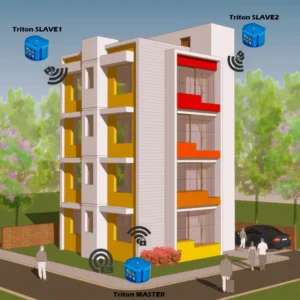
ADVANCED MONITORING
In this operational mode TRITON-F can be connected to other Lunitek devices (TRITON-F, Atlas), via LAN or WIFI and the whole system will act as one multichannel sensor.
A TRITON-F device is set up to work as MASTER.
The MASTER will collect data from all the SLAVEs on the local network.
The MASTER merges the data coming from SLAVEs on local network, with no impact on the analog acquisition of its own channels and then creates a single recording file.
A resulting merge file displays all the data coming from sensors deployed on the building as if it was a traditional multichannel recording.
The MASTER is the only device to be connected to the external network (HSPA, ADSL etc.)
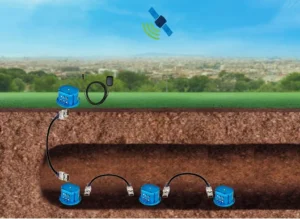
DAISY CHAIN
Daisy Chain Daisy Chain connection is intended for all the applications where many devices are installed in-line and where guaranteeing enough sky-view for GNSS is difficult and there’s no local power supply.
Benefiting from the daisy chain connection, TRITONMASTER, which guarantees GNSS coverage and power supply, will then synchronize and power-up all the installed instruments.
Thanks to the pass-through connection, each device can pass synchronization and power supply to the next one.
Options
You can have TRITON-F configured according to your needs
![]() WiFi 2.4Ghz comunication radio module.
WiFi 2.4Ghz comunication radio module.
Thanks to the SoftAP function you can download data and configure your TRITON-F directly from your device (mobile, tablet, notebook), moreover you can create a network of completly wireless Lunitek devices.
![]() HSPA comunication radio module.
HSPA comunication radio module.
Insert a standard sim card inside your TRITON-F and you can reach it remotely using a VPN.
![]() Carrying handle, useful when using the instrument for dynamic tests, it makes transport easier.
Carrying handle, useful when using the instrument for dynamic tests, it makes transport easier.
![]() TRITON-F is available with a professional carrying case.
TRITON-F is available with a professional carrying case.
Models
TRITON-F Accelerograph models available
- TRITON-F A160: High Resolution Recorder combined with low noise true force balance accelerometer with a dynamic range of 160dB, Bandwidth DC to 100Hz.
- TRITON-F A130: High Resolution Recorder combined with low noise fba accelerometer with a dynamic range >130dB, Bandwidth 0.1 to 100Hz.
- TRITON-F A90: High Resolution Recorder combined with high performance/low cost MEMS accelerometer with dynamic range of 90dB, Bandwidth DC to 1KHz.
Models are available in Tri-axial, Bi-axial or Uni-axial version
Features
| Inputs | Differential |
| Channels | 3 low noise 24bit |
| Dynamic Range | >136dB@100Sps |
| Sampling Rate | 10,100,200,250,500,1000 Sps |
| Sampling Topology | Synchronous |
| Data Format | MiniSeed or Proprietary |
| Trigger | STA/LTA |
| Timing | Built-in GNSS receiver |
| Timestamp | Encapsulated in data |
| LAN | 10/100 ethernet port |
| WiFi | Optional built-in |
| Cellular Modem | Optional built-in |
| Power Supply | 9-28 Volt DC – power consumption < 2W |
| Back up Battery | Internal LiPo |
| System Autonomy w/o external supply | 33 hours |
| Configuration | Web Interface |
| Compatibility | Earthworm,Antelope,Geopsy,SeiscomP and SeisGram2K |
| Weight | 2Kg |
| IP protection | IP68 |
| Temperature Range | -40°C to +70°C |
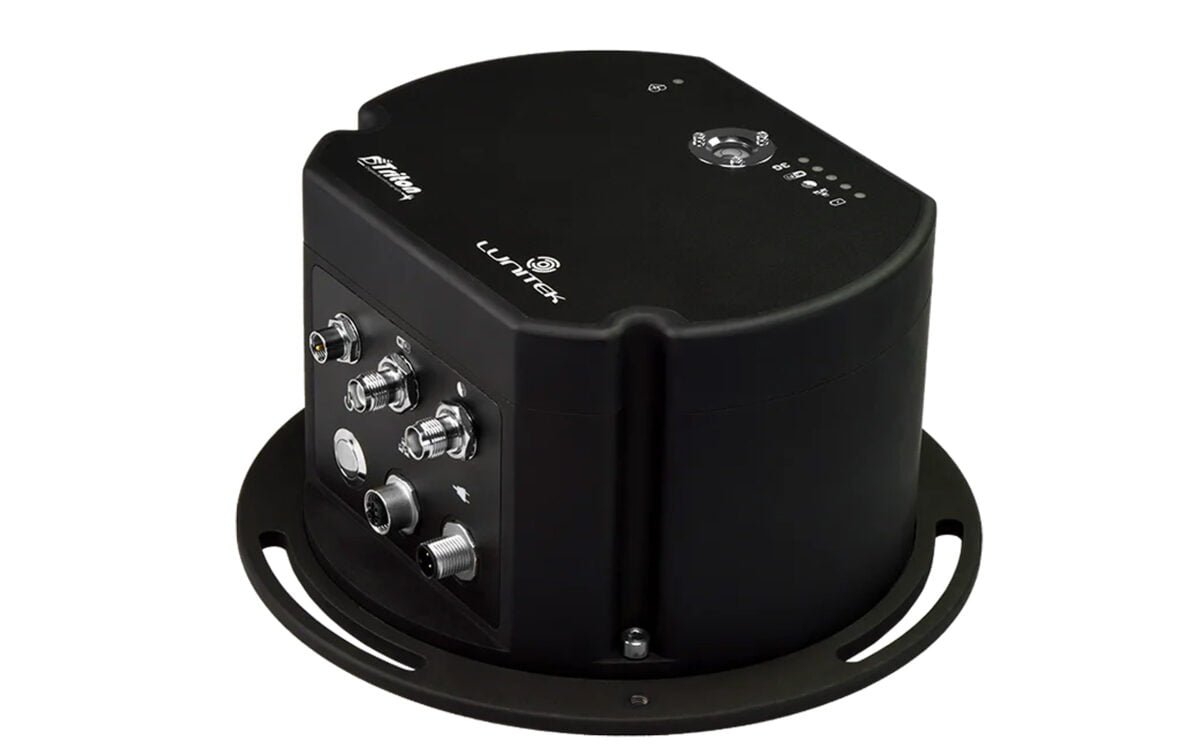
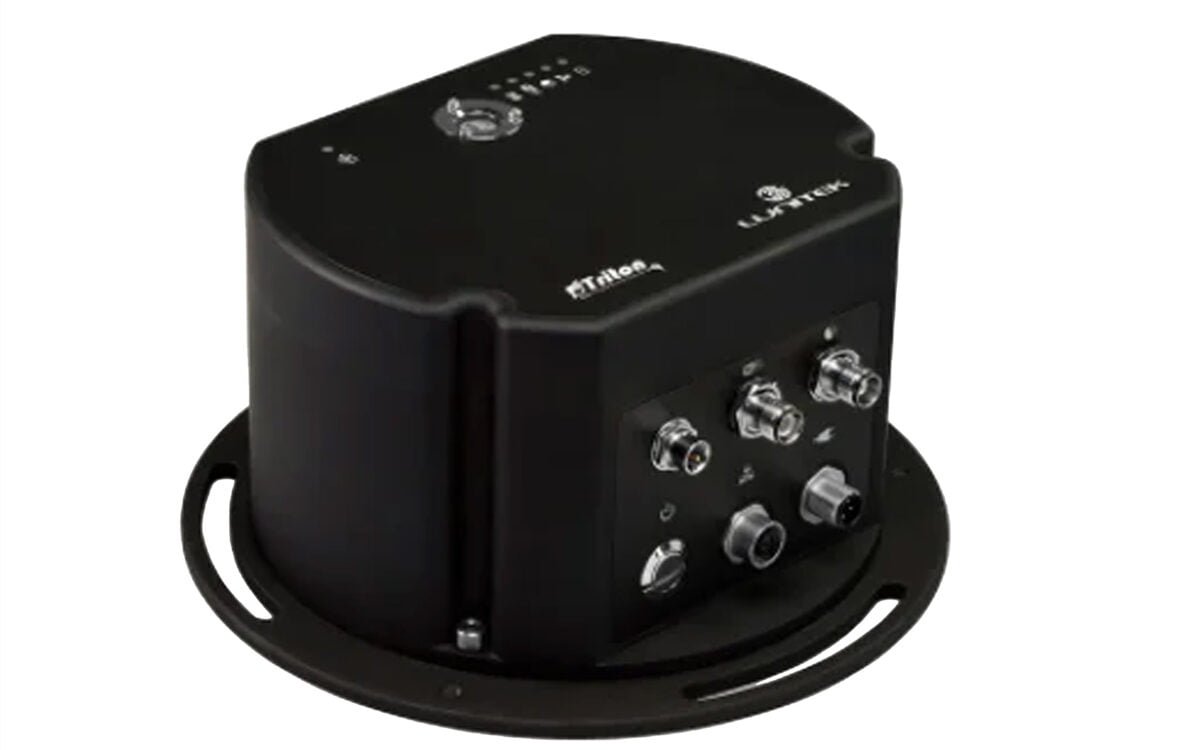


REQUEST A QUOTE
You may also like…
RELATED PRODUCTS
REFERENCE CUSTOMERS

























































































































